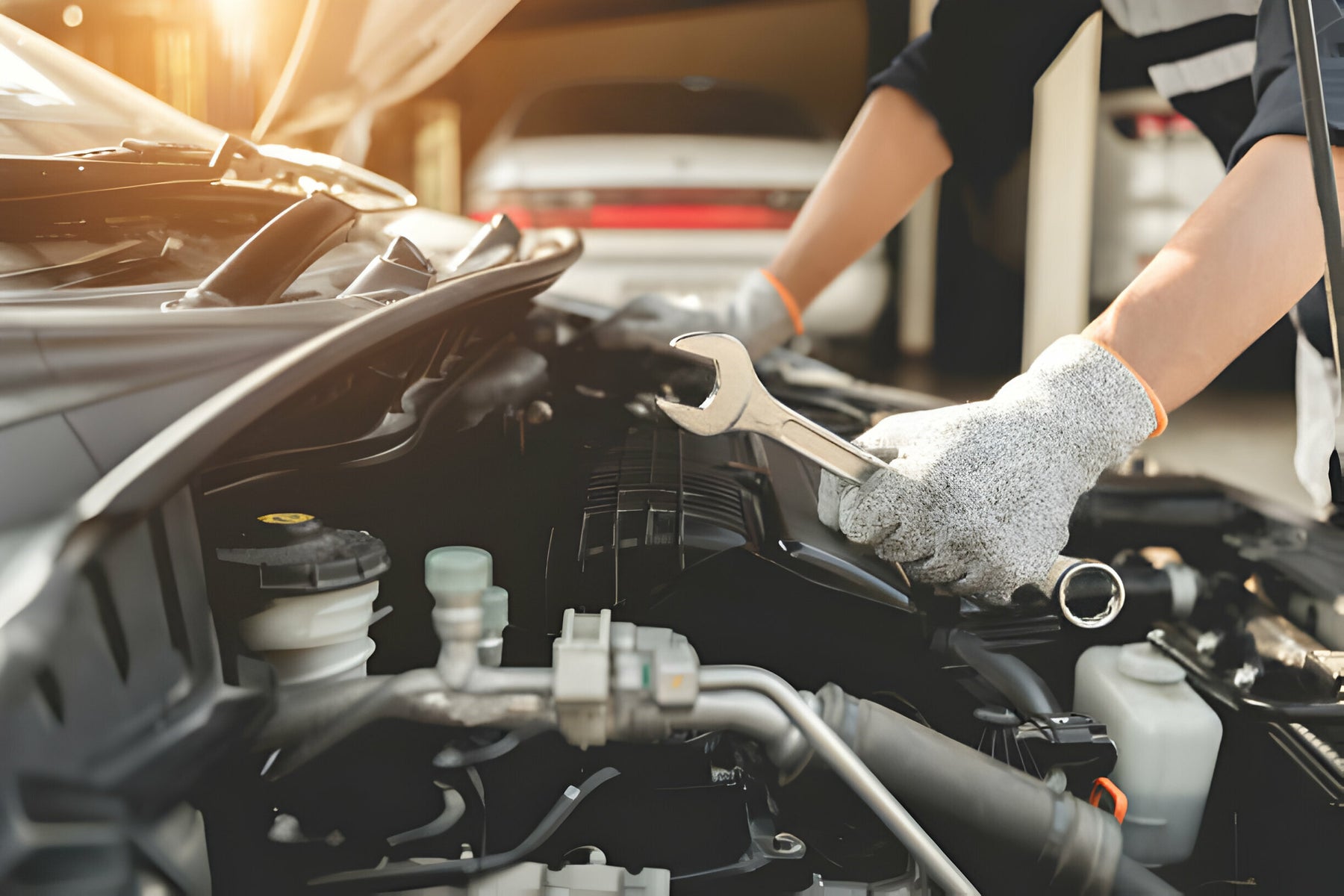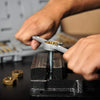
From Simple to Severe: Understanding the Impact of Common Car Repair Mistakes
In the intricate world of automotive maintenance and repair, even the most seemingly benign oversight can cascade into a series of complications that compromise vehicle performance, safety, and longevity. The landscape of car repair is fraught with potential pitfalls, where a simple mistake can morph into a severe problem, often with costly consequences. This article delves deep into the anatomy of common automotive repair mistakes, dissecting their origins, impact, and the preventative measures that professionals and enthusiasts alike can employ to steer clear of these pitfalls. Our exploration is not just about identifying what can go wrong; it's a comprehensive guide aimed at fostering a culture of meticulousness and knowledge among those who brave the complexities of car repair.
The realm of automotive repair is both vast and intricate, requiring a delicate balance of skill, experience, and continuous learning. Even seasoned professionals can find themselves ensnared by the subtleties of automotive systems, leading to errors that range from the negligible to the catastrophic. Through this detailed examination, we aim to arm our readers with the insight needed to navigate these treacherous waters, ensuring that their automotive ventures are both successful and sustainable.
The Perils of Ignoring Regular Maintenance
- Neglecting Oil Changes: Skipping oil changes can lead to engine buildup, reduced efficiency, and ultimately, engine failure.
- Overlooking Tire Pressure: Incorrect tire pressure can cause uneven wear, reduce fuel efficiency, and increase the risk of tire blowouts.
- Ignoring Brake Maintenance: Failing to service brakes can result in reduced braking efficiency and potentially dangerous driving conditions.
Regular maintenance is the cornerstone of vehicle longevity and reliability. Ignoring routine checks and services, such as oil changes, tire pressure monitoring, and brake inspections, can lead to significant problems down the line. For instance, neglecting oil changes can cause sludge to accumulate in the engine, severely hampering its performance and lifespan. Similarly, overlooking tire pressure not only affects the vehicle's handling and fuel economy but also poses a safety risk due to increased chances of tire failure. Brake systems, integral to vehicle safety, require regular maintenance to prevent failure, which could lead to catastrophic outcomes on the road.
The Consequences of Using Incompatible Parts
- Mismatched Tires: Using tires of different sizes or tread patterns can adversely affect vehicle handling and safety.
- Incorrect Fluids: Filling systems with the wrong type of fluid can lead to component damage and system failure.
- Non-OEM Parts: While not always detrimental, using non-original equipment manufacturer (OEM) parts without proper vetting can lead to compatibility issues.
The allure of saving money with aftermarket or incompatible parts can be tempting, but the potential costs far outweigh the initial savings. Mismatched tires, for example, can disrupt the vehicle's handling characteristics and increase the risk of accidents. Similarly, using incorrect fluids not only jeopardizes the functionality of the affected systems but can also lead to severe damage requiring costly repairs. While aftermarket parts can be used effectively, thorough research and understanding of their compatibility with the vehicle's systems are crucial to avoid adverse effects.
DIY Repairs Gone Wrong
- Overconfidence: Attempting repairs beyond one's skill level can lead to further damage.
- Lack of Proper Tools: Using inappropriate tools can cause damage to parts and systems.
- Misdiagnosis: Incorrectly identifying the problem can lead to unnecessary repairs and costs.
The rise of DIY culture has empowered many car owners to take repairs into their own hands. However, overconfidence and a lack of proper tools or diagnostic equipment can turn a well-intentioned repair into a costly mistake. Misdiagnosing a problem not only leads to wasted time and resources but can also exacerbate the original issue, resulting in higher repair bills and prolonged vehicle downtime.
Skipping Pre-Purchase Inspections
- Hidden Problems: Not identifying potential issues before buying a used car can lead to unexpected repair costs.
- Safety Concerns: Overlooking safety-related defects can endanger the vehicle's occupants.
- Financial Implications: Unanticipated repairs can significantly affect the total cost of ownership.
Purchasing a used vehicle without a thorough pre-purchase inspection is akin to gambling with one's safety and finances. Hidden problems, such as undisclosed accidents or neglected maintenance, can translate into substantial repair costs down the line. Moreover, safety concerns that go unnoticed pose a direct threat to the occupants, making the importance of a comprehensive inspection paramount before finalizing any purchase.
Neglecting Software Updates
- Outdated Systems: Failing to update vehicle software can leave critical systems operating on outdated parameters.
- Security Risks: Older software versions may be vulnerable to security breaches, putting personal data at risk.
- Performance Issues: Without updates, vehicles might not benefit from improvements or fixes that enhance functionality and efficiency.
In today's increasingly digital automotive landscape, software plays a crucial role in the operation of various vehicle systems. Neglecting software updates can lead to outdated system functionalities, increased security risks, and missed opportunities for performance enhancements. Regular updates ensure that the vehicle operates at its optimal level, benefiting from the latest improvements and security measures.
Improper Use of Diagnostic Tools
- Faulty Interpretations: Misinterpreting diagnostic codes can lead to incorrect repair strategies.
- Overreliance: Solely relying on diagnostic tools without a thorough manual inspection can overlook underlying issues.
- Skill Gap: Inexperienced users might not fully understand how to use diagnostic tools effectively, leading to errors.
Diagnostic tools are invaluable in identifying vehicle problems, yet improper use can lead to misdiagnosis and unnecessary repairs. Faulty interpretations of diagnostic codes, overreliance on these tools without conducting a comprehensive manual inspection, and a lack of experience can all contribute to costly mistakes. A balanced approach that combines technology with traditional diagnostic methods is essential for accurate problem-solving.
Failing to Address Recalls
- Safety Hazards: Ignoring recall notices can leave known safety issues unresolved.
- Legal Implications: Owners who neglect recalls might face legal consequences if accidents occur as a result.
- Resale Value: Vehicles with unresolved recalls may have reduced resale value.
Recalls are issued to address safety defects or non-compliance with standards, yet some vehicle owners fail to take these notices seriously. Ignoring recalls not only poses safety risks but can also have legal and financial implications. Promptly addressing recall notices ensures that vehicles remain safe to operate and helps maintain their value over time.
Overlooking Electrical System Maintenance
- Battery Neglect: Failing to maintain the battery can lead to power loss and stranded vehicles.
- Corroded Connections: Corrosion at electrical connections can cause intermittent power issues and component failures.
- Wiring Damage: Ignoring signs of wiring damage can result in short circuits and potential fire hazards.
The electrical system is the lifeblood of modern vehicles, powering everything from the ignition system to entertainment features. Neglecting battery maintenance, allowing corrosion at electrical connections, and overlooking wiring damage can all lead to power loss, unreliable vehicle operation, and safety hazards. Regular inspections and maintenance are crucial to prevent electrical system failures.
Related Article: Common Automotive Repair Problems
Drive Home the Message
Owning and maintaining a vehicle is a significant responsibility that demands attention to detail, and an understanding of the complexities involved in automotive care. The common car repair mistakes highlighted in this article underscore the importance of regular maintenance, the use of compatible parts, and the value of professional advice. By avoiding these pitfalls, car owners can ensure their vehicles remain reliable, safe, and enjoyable to drive for years to come.
The journey through the intricacies of automotive repair is fraught with challenges, but also rich with opportunities for learning and growth. Whether you're a seasoned professional or an enthusiastic DIYer, the key to successful vehicle maintenance lies in acknowledging the potential for error, embracing continuous learning, and approaching each task with diligence and care. Let this guide serve as a roadmap to navigating the complex landscape of car repair, steering clear of common mistakes, and cruising towards automotive excellence.



